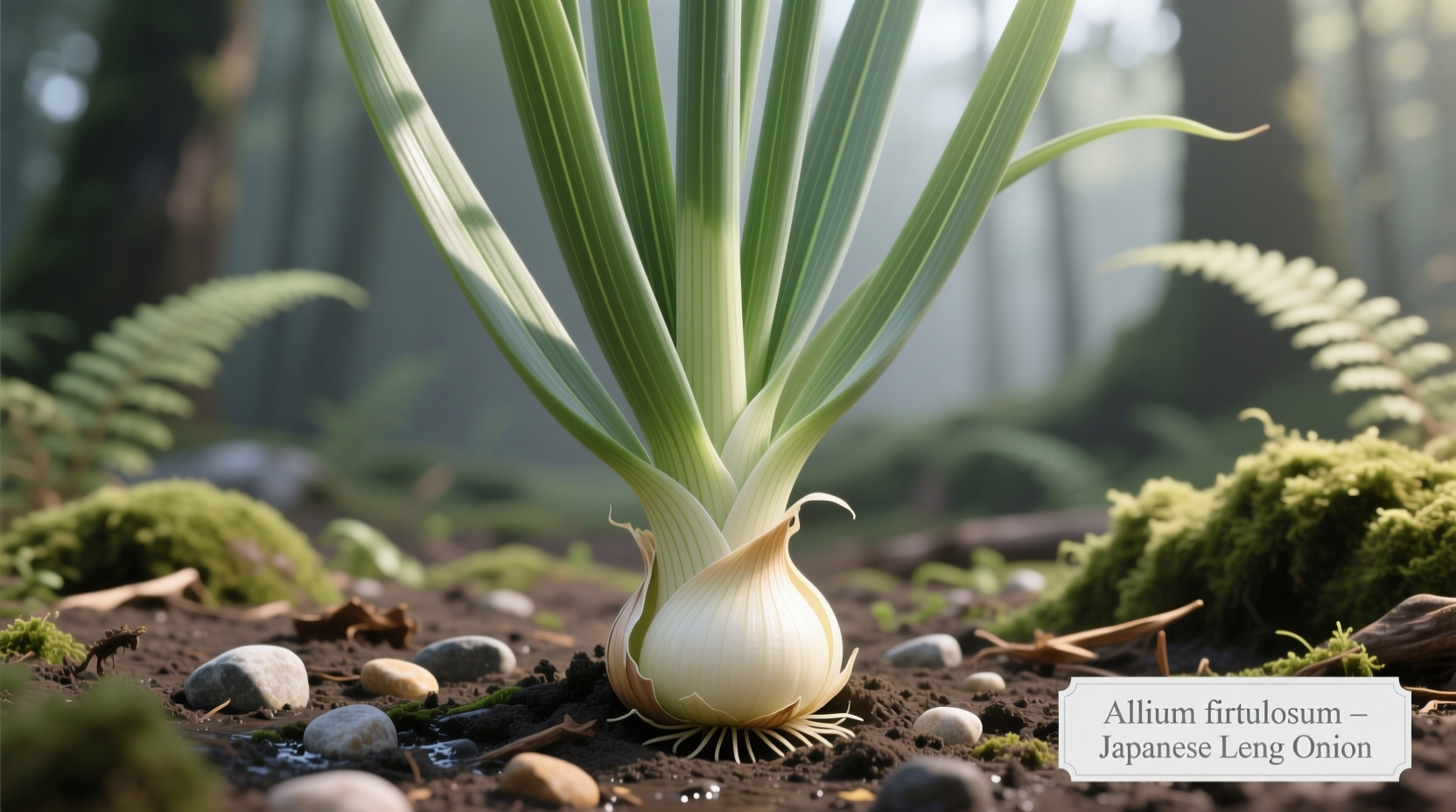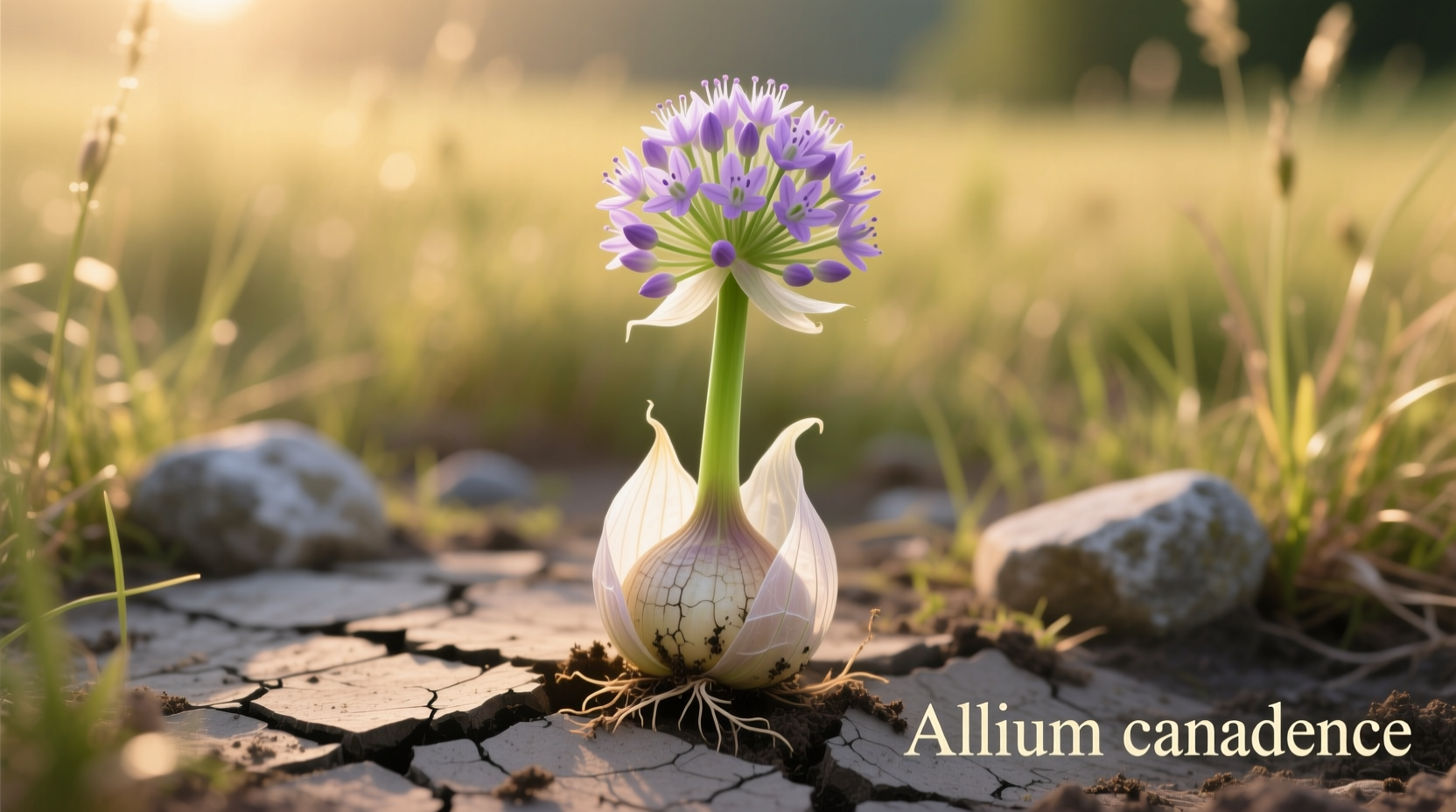Discovering Nature's Flavorful Secret: Wild Onions
Foraging for wild onions connects you with centuries of culinary tradition while adding unique flavor to your kitchen. Unlike store-bought varieties, wild onions offer a complex taste profile that varies by season and habitat. This guide provides everything you need to safely identify, harvest, and use these versatile plants—whether you're a beginner forager or experienced wild food enthusiast.
What Makes Wild Onions Different From Garden Varieties?
Wild onions (Allium species) grow naturally without cultivation across North America, with Allium canadense being the most common edible variety. These hardy perennials have adapted to diverse ecosystems, developing unique flavor characteristics based on their environment. Unlike cultivated onions that prioritize uniformity, wild varieties offer nuanced tastes ranging from mild garlic notes to sharp chive-like flavors depending on soil composition and growing conditions.
| Identification Feature | Wild Onion (Allium canadense) | Death Camas (Toxic Look-alike) |
|---|---|---|
| Smell Test | Distinct onion/garlic aroma when crushed | No onion scent (may smell like cucumber or nothing) |
| Leaf Structure | Hollow, cylindrical leaves | Solid, grass-like leaves |
| Bulb Appearance | Small, white to pinkish bulbs with fibrous roots | Smooth, round bulbs with no fibrous roots |
| Flower Characteristics | Pink to purple clustered flowers | White to yellow star-shaped flowers |
This critical comparison helps prevent dangerous misidentification. According to the USDA Forest Service, proper identification is essential as some toxic plants closely resemble edible species. Always perform the smell test before harvesting—if you don't detect that unmistakable onion aroma, leave the plant undisturbed.
Where and When to Find Wild Onions
Wild onions thrive in specific habitats across North America. Understanding their preferred environments increases your foraging success while minimizing risk of encountering look-alikes. These plants typically grow in:
- Open meadows and fields with well-drained soil
- Woodland edges and forest clearings
- Along stream banks and river valleys
- Abandoned pastures and uncultivated land
Seasonal availability follows a predictable pattern. According to research from Cornell University's School of Integrative Plant Science, wild onions emerge in early spring (March-April) with peak harvest season from April through June. The bulbs develop fully by late spring, while the green tops remain edible through early summer. In warmer climates, you might find them as late as August.

The Sustainable Foraging Process
Responsible harvesting ensures wild onion populations remain healthy for future seasons. Follow these ethical guidelines:
- Identify with certainty – Never harvest if you're uncertain about identification
- Harvest selectively – Take only what you'll use (no more than 10-15% of a patch)
- Use proper technique – Gently loosen soil around bulbs with a small trowel
- Leave some behind – Always leave mature plants to reseed the area
- Restore the site – Cover disturbed soil to prevent erosion
The University of California's Agriculture and Natural Resources department emphasizes that sustainable foraging practices maintain ecosystem balance. Overharvesting can deplete local populations and disrupt soil health, affecting other plant and animal species that depend on these habitats.
From Field to Table: Preparing Wild Onions
Wild onions offer culinary versatility throughout the plant. Each part provides unique flavor characteristics:
- Green tops – Mild chive-like flavor perfect for salads and garnishes
- Bulbs – Stronger onion flavor ideal for cooking
- Flowers – Delicate onion taste great in salads or as edible decorations
Cleaning requires attention to detail. Gently rinse bulbs under cool water, removing any soil trapped between layers. For green tops, soak briefly in cold water to dislodge insects or debris. Unlike cultivated onions, wild varieties often have more soil clinging to their roots due to natural growing conditions.
Culinary Applications for Wild Onions
Wild onions enhance dishes with their distinctive flavor profile. Try these preparation methods:
- Raw applications – Finely chop green tops for salads, salsas, or compound butter
- Sautéed dishes – Cook bulbs slowly in olive oil to develop sweet, caramelized notes
- Pickling – Preserve bulbs in vinegar for year-round use
- Infused oils – Create flavorful oil by steeping bulbs in high-quality olive oil
Professional chefs often use wild onions as a finishing touch to preserve their delicate flavor. When cooking, add them toward the end of preparation to maintain their distinctive taste. The flavor intensity varies by season—spring harvests tend to be milder while summer bulbs develop stronger flavors.
Safety Considerations Every Forager Must Know
While wild onions are safe when properly identified, certain precautions are essential:
- Always perform the smell test on multiple parts of the plant
- Avoid areas potentially contaminated by pesticides or pollutants
- Never consume plants growing near roadsides or industrial areas
- When in doubt, consult an experienced forager or botanist
The North American Foraging Council reports that most wild food incidents result from misidentification rather than inherent toxicity of properly identified plants. If you experience any adverse reactions after consuming wild onions, seek medical attention immediately and save a sample of what you ate for identification.
Preserving Your Wild Onion Harvest
Extend the enjoyment of your foraged bounty with these preservation methods:
- Drying – Hang small bunches in a cool, dry place until completely dry
- Freezing – Chop and freeze in ice cube trays with water or oil
- Pickling – Preserve bulbs in vinegar with spices for 2-3 weeks
- Pesto – Blend with nuts, oil, and cheese for flavorful preservation
Dried wild onions retain flavor for up to a year when stored in airtight containers away from light. Frozen portions work well for cooking applications where texture isn't critical. Pickled bulbs develop complex flavors that enhance salads and charcuterie boards.











 浙公网安备
33010002000092号
浙公网安备
33010002000092号 浙B2-20120091-4
浙B2-20120091-4